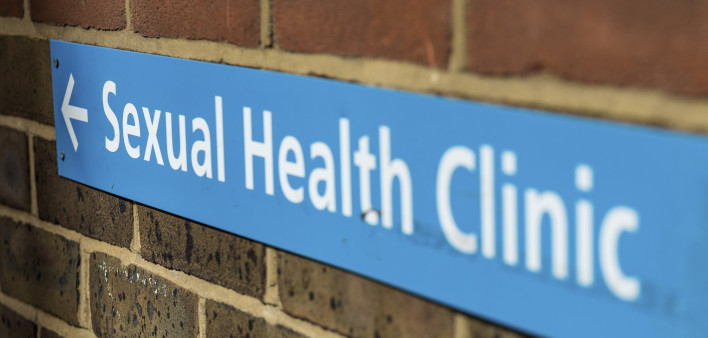The federal government awarded $4.3 million in a second round of grants to boost HIV services at clinics focused on sexually transmitted infections (STIs), according to an announcement posted on HIV.gov.
Many existing STI specialty clinics, which operate in areas where HIV rates are elevated, already serve populations at higher risk for HIV, including Black, Latino and LGBTQ communities. What’s more, this year sexually transmitted infections—including chlamydia, gonorrhea and syphilis—reached a record high for the sixth year in a row.
However, many of these STI clinics lack the funding, training and resources to provide needed HIV services. These grants aim to change that.
Specifically, according to HIV.gov, the $4.3 million in funding will help:
- Provide support to providers and clinical settings to further integrate HIV preventive services in STI specialty clinics;
- Develop resources, curricula and learning communities specifically to support the increase of HIV preventive services in STI specialty clinics;
- Work with STI specialty clinics to deliver high-quality, affirming and culturally and linguistically relevant services for racial/ethnic and sexual and gender minority populations.
This is the second year of federal funding to boost HIV services at STI clinics, also referred to as STD (sexually transmitted disease) clinics. The grants arrive from the Minority HIV/AIDS Fund (part of the Department of Health and Human Services) and the Centers for Disease Control and Prevention (CDC).
HHS Minority HIV/AIDS Fund awarded an additional $4.3M to support a second year of training and technical assistance by @NNPTC. The additional funding will help expand the capacity of #STD specialty clinics to deliver #HIV prevention services.
— HIV.gov (@HIVGov) August 19, 2021
Learn more. https://t.co/ONUaS0N7nh
In August 2020, the federal government awarded $4 million to STI clinics to help:
- Assess training needs and service gaps to inform the development and delivery of comprehensive HIV and STI clinical prevention training and technical assistance for providers serving priority populations;
- Improve data collection and reporting capacity to determine success in meeting needs of racial/ethnic and sexual and gender minority populations;
- Provide distance-based (web or phone) consultations and resources related to telehealth, HIV PrEP (pre-exposure prophylaxis) and other HIV service integration activities.
The funding is part of “Ending the HIV Epidemic: A Plan for America,” a 10-year federal initiative that aims to lower new HIV rates by 75% by 2025 and by 90% by 2030. This would amount to fewer than 3,000 HIV cases a year. “Reducing new infections to this level,” according to the initiative, “would essentially mean that HIV transmissions would be rare and meet the definition of ending the epidemic.” The strategy for reaching these benchmarks involves investing federal funding and resources in 57 key jurisdictions. This translates to the 48 counties plus Washington, DC, and San Juan, Puerto Rico, that together account for 50% of new HIV cases, plus seven rural states with high HIV burdens: Alabama, Arkansas, Kentucky, Mississippi, Missouri, Oklahoma and South Carolina.
Take your #HIV research to the next level with AHEAD.
— HIV.gov (@HIVGov) September 1, 2021
America’s HIV Epidemic Analysis Dashboard is a data visualization tool with local & national HIV data used to inform analyses & ultimately support action to #EndHIVEpidemic. Check out the Guide: https://t.co/4c2dpvNn5q pic.twitter.com/EOHVkzp0AF
“Ending the HIV Epidemic in the U.S. (EHE) is a whole-of-society effort that requires providing services to people with and at risk for HIV wherever they seek care,” writes Leandro Mena, MD, MPH, director of the CDC’s Division of STD Prevention, in the HIV.gov post.
“Common across the HIV, STI and viral hepatitis national strategic plans is the guiding policy of a holistic, whole-of-nation approach to address the syndemic of STIs, HIV, viral hepatitis, high-risk substance use, and social determinants of health that impact related health disparities and inequities," Mena continues. “STD specialty clinics are critical partners in ending the HIV epidemic as they provide services to people who may not otherwise have access to health care, including those who are uninsured and people who are looking for low-barrier, expert, and confidential services (e.g., nontraditional hours, walk-in or express appointments, low or no cost). Successful integration of HIV prevention services in STD specialty clinics, which is a crucial piece of a syndemic approach to HIVs and STDs, will require increased training and capacity.”
In July, the CDC announced $117 million in grants to local and state efforts to support “Ending the HIV Epidemic.” How close is your state to ending its HIV epidemic according to the national plan’s criteria? Find out with the interactive AHEAD dashboard. To learn more about “Ending the HIV Epidemic,” read an overview at HIV.gov and visit the official webpage at HRSA.org. For a related POZ article, see “Plans to End the HIV Epidemic at Home and Abroad.”
In related news, see “Good and Bad News About Global Rates of HIV, Viral Hepatitis and STIs” and “The Roaring Twenties Are Back: While PrEP and U=U Continue to Reduce Our Community HIV Viral Load, STIs Are About to Soar.”







Comments
Comments